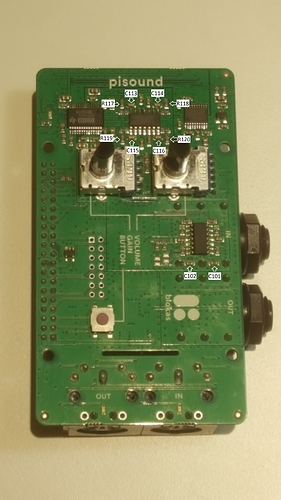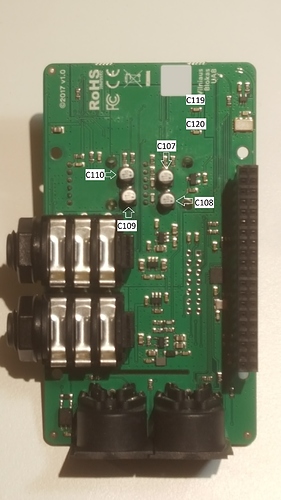Hey, the Pisound’s anti-alias filter is optimized for audio / musical usage, so that’s why the low pass cutoff is set there. The filters could be changed by hardware modifications (keep in mind that warranty is voided in that case :)), see the below pictures for component locations.
You are right, the input range is 2.5Vpp, we made a mistake in Pisound’s input specs, thank you for pointing this out. When the GAIN potentiometer is at its lowest value, 2X gain gets applied to the input signal, this is useful for low-voltage inputs such as guitars and microphones, and this still covers 0 dBu signal level. The input range can also be modified by replacing some components.
There’s groups of components which must be kept at the same value, they will be tied together with ‘=’ symbol.
High pass filter
A ceramic capacitor valued between 10nF to 1uF should be added in parallel for each electrolytic cap C107=C108=C109=C110 (10uF).
C101=C102 (2.2uF) ceramic capacitors should be replaced with higher value ones, or matching electrolytic capacitors valued between 10uF and 100uF should be added in parallel.
Low pass filter
C119=C120 (10nF) ceramic capacitors should be replaced with lower value ones.
C113=C114=C115=C116 (2.2nF) ceramic capacitors should be replaced with lower value ones.
5Vpp input range
R117=R118=R119=R120 (2.2kΩ) should be replaced with 1.1kΩ valued resistors. Alternatively, 2.2kΩ valued resistors can be added in parallel for each listed resistor.

